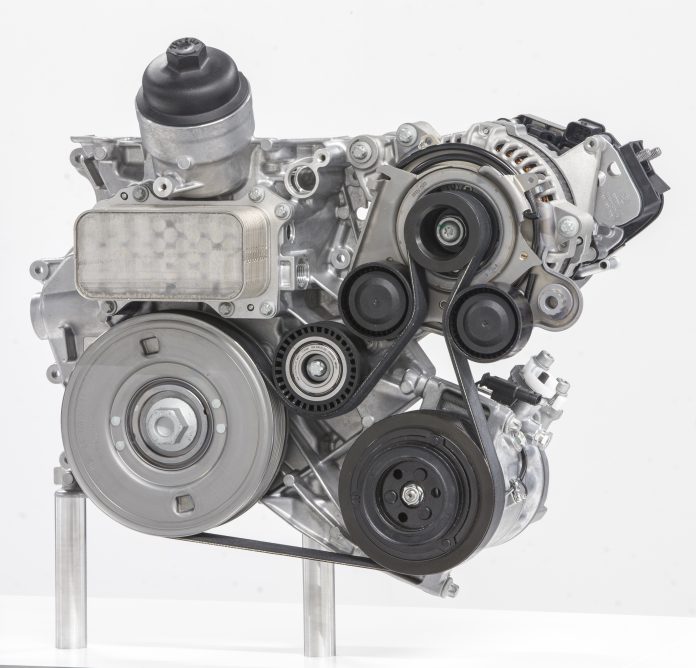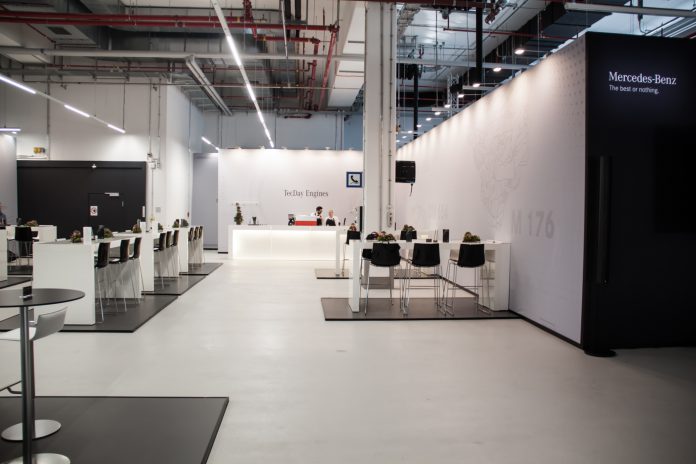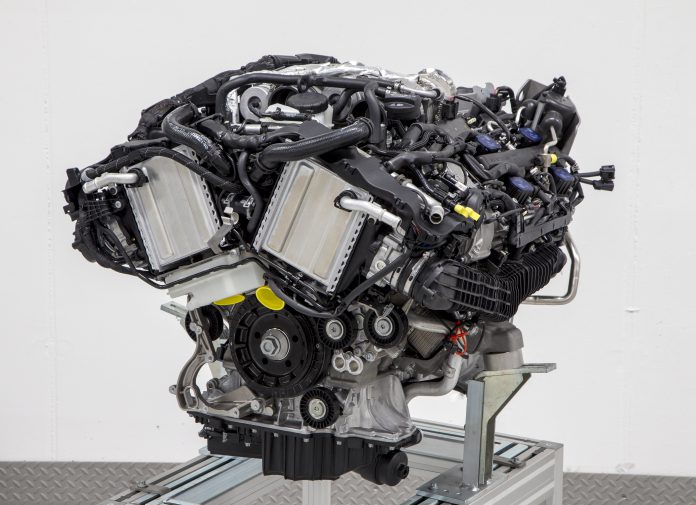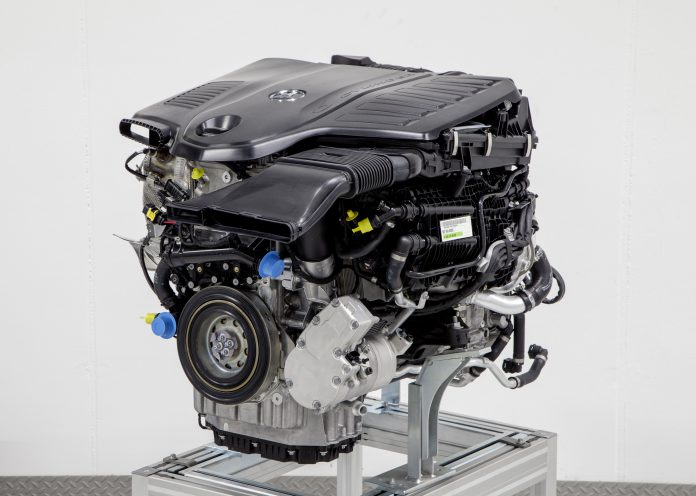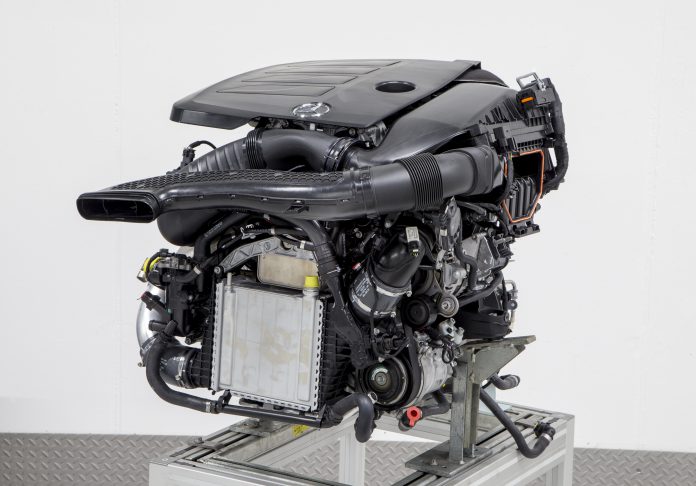Earlier this year Mercedes-Benz kicked off their strategic ‘engine offensive’ with the debut of their all-new four-cylinder diesel in the 2017 Mercedes-Benz E-Class. The 194 hp unit was introduced first in the E 220 d, while the entry level diesel unit delivering 150 hp was introduced in the E 200 d at a later stage.
Little did we know that this marked only the beginning of a pretty sizable turnaround in the German brand’s engine assortment. This week Mercedes-Benz revealed four more all-new power plants joining the 2.0-liter four-cylinder diesel in one of the brand’s largest engine transitions ever. A new four-cylinder petrol has been developed, and an inline six-cylinder petrol, inline six-cylinder diesel and 4.0-liter V8 biturbo with hot inside V are set to make their debut in the upcoming S-Class facelift (2018).
We got an exclusive preview and technical insights this week at the recently inaugurated state-of-the-art engine testing center in Sindelfingen, near Stuttgart in Germany.
Brand new facility, one of the most technologically advanced in today’s automotive industry
The brand new Power Integration Center (AIZ) cost €600 million and has a story of its own to it. Opened over the summer of this year, it features 10 brand new state-of-the-art testing benches that open up an array of new testing possibilities for the upcoming generation of Mercedes-Benz cars. It joins Mercedes-Benz’ R&D facility and customer center of excellence in Sindelfingen nearby motoring capital Stuttgart.
Highlights of the new testing rigs include a high-precision torque management system and a climatic altitude chamber that uses partial vacuum to simulate an altitude of up to 5,000 meters at temperatures as low as -30 degrees celsius. Safety and sustainability played a key role in the construction of the new testing center, just as Mercedes-Benz is in the ongoing process of further engine clean up. A comprehensive energy recovery system recovers 98% of the braking energy produced on test rigs and feeds it right back into the building’s circuit.
This means that the air conditioning units in the building run energy-neutral for two thirds of the year. To get a grasp of the scale of operations, ten testing rigs running simultaneously can supply up to 7500 households with electricity. It’s evident that these new testing rigs exceed the capabilities of what used to be the standard in automotive testing. Its simulator doesn’t just know all the world’s racing circuits by heart, but it can imitate all kinds of weather conditions, from snow to extreme rainfall or very warm sunny days.
One of the managers on site told me that although the testing rigs can handle cruising speeds of up to 180 km/h, the testing speeds rarely exceed 120. There is a high speed airstream blower which blows wind speeds of up to 180 km/h to cool down specific components of the vehicles to prevent overheating.
With the use of cameras and the latest measurement technologies the AIZ staff can simulate almost any possible situation on the road, minimizing the need for actual testing on the road. However, MB personnel emphasized that despite all this technology, the majority of tests are still carried out on open and closed roads.
Mercedes-Benz is far from finished with expansion of their research and development facilities in Sindelfingen. Next up on the agenda is an expansion of the Mercedes-Benz Technology Center (MTC) due for opening in 2018. That center will focus on vehicle safety, electronics and will feature an extensive computer center.
Tecday: New generation of combustion engines at Mercedes-Benz
While it’s been truly a privilege to get an inside look of Mercedes’ brand new AIZ, the main purpose of my visit was to get acquainted with the brand’s future engine line-up. You must be wondering why Mercedes-Benz would go through all the trouble of reworking their combustion engines, especially given that they introduced the new generation EQ at this year’s Paris Motor Show.
That the automotive world is slowly transforming to alternative powertrains is an undeniable fact, but the speed of such a transition is not as quick as you’d expect. Prof. Dr. Thomas Weber, head of Mercedes-Benz cars development for 12 years now, explains to us why.
When asked whether he thinks the era of internal combustion engines is finally over, a determined no is his answer: “The optimization of advanced high-tech engines plays a key role in our road map towards sustainable mobility. For the mobility of the future, we are deliberately not committing ourselves to one solitary form of drive system, but to a coexistence of efficient and clean petrol engines, diesels, plug-in hybrids, battery and hydrogen drive systems. Each of these types of drive system has its justification and future prospects.”
Considering the brand’s immense product portfolio and the wide spectrum of customers they serve, the choice of each power unit for each particular model is shaped by respective demand in different markets. Weber emphasizes the fact that great successes with the advancement of the internal combustion engine has been achieved so far. Mercedes-Benz managed to cut the NEDC fuel consumption of their vehicle fleet by half over the course of the past 20 years.
Following up, Weber was asked why inline sixes are now making a comeback at Mercedes-Benz while other manufacturers see them as obsolescent. His answer is short and simple: “electrification is the key factor. The absence of a belt drive makes for a highly compact overall length, with the in-line configuration making space for important ancillary components on either side of the engine.”
Mercedes-Benz doesn’t necessarily see the reinstatement of inline-sixes as downsizing, it was a well discussed topic rather than an end to itself driven by more pressing regulations, said Prof. Weber. “We prefer the word “rightsizing”, i.e. tailoring the engine to the needs of the customer. Instead of trimming the number of cylinders from the outset, thereby foregoing refinement and output, there are much more intelligent solutions.”
The new V8 Biturbo gasoline engine (M 176)
Naturally it’s only right for us at GTspirit to start off with the mighty V8 Biturbo engine. Pushing the old generation V8 Biturbo to retirement is the new, codenamed M 176, 4.0-liter V8 Biturbo with ‘hot inside V’. Now the twin-turbochargers are installed on the inside of the cylinder banks speeding up engine response and boosting lower exhaust emissions. The necessary precautions were taken however, with the manifolds and exhaust turbochargers being extra well insulated in the interest of thermal protection for other engine components. An AMG version with CAMTRONIC cylinder deactivation will debut on the E63 later this year, while the AMG version of the M176 will make its way to the upcoming S63.
Biggest change by far on the new V8 biturbo is the cylinder deactivation module. As exemplified by the lead engineer on site, cylinders two, three, five and eight are automatically shut off in driving modes Eco and Comfort from the DYNAMIC SELECT menu at engine speeds between 900 and 3250 rpm. At the same time fuel supply and the ignition are deactivated, so that no unburnt mixture is left in the deactivated combustion chamber. The four cylinders are simultaneously shut off through the CAMTRONIC valve timing system, saving a considerable amount of fuel while reducing emissions significantly at the same time.
Last but not least is a firm power impulse for the new standard V8 Biturbo. The outgoing engine produced 455 hp (335 kW) in its standard condition, while its successor has an increased output of 476 hp (350 kW) and 700 Nm of torque available from 2,000 rpm.
The new inline six-cylinder diesel engine (OM 656)
Marketed as Mercedes-Benz ‘long distance athlete’, the new inline-six diesel features a stepped-bowl combustion process and further improved NANOSLIDE cylinder wall coating to reduce friction by 40 to 50 percent.
Most important is the engine’s performance surplus compared to the outgoing V6 (OM 642) engine. The new inline-six diesel produces 313 hp (230 kW), a steady increase over the previous 258 hp (190 kW). The transition of the six-cylinder diesel goes hand-in-hand with fuel savings of over 7 percent.
The stepped-bowl combustion process has been favored over the previous ‘omega combustion bowl’, as the efficiency of the new process is increased through a higher burning rate. The increased efficiency also translates to significantly fewer emissions, and Mercedes-Benz said that this six-cylinder diesel is now all ready for the set emission standards in the upcoming years.
The new inline six-cylinder gasoline engine (M 256)
Mercedes-Benz’ brand new inline-six petrol is arguably one of the most technologically advanced new engines set to be introduced in the S-Class facelift next year. Besides reworking the six-cylinder configuration, boosting efficiency and output, this particular engine was chosen to host a bunch of new innovations including the new 48V system, Integrated Starter-Alternator (ISG), and an electric auxiliary compressor (eZV). The new inline-six is set to blur the boundaries with today’s V8 engines in terms of performance while offering much more fuel efficiency, as well as redefining the boundaries with hybrid powertrains.
The new six-cylinder engine has been systematically designed for electrification, with the 48V system playing a key role. Its performance too comes fairly close to that of the current eight-cylinder. The new sixer produces 408 hp (300 kW) and more than 500 Nm of torque. That’s a considerable increase compared to the outgoing V6 (M 276) which was rated at 333 hp (245 kW) and 480 Nm of torque. Besides being as much as 15 percent more efficient as its predecessor, the new inline-six is by all means a much more compact engine, with cylinder spacing having been reduced from 106 mm to just 90 mm.
Responsible for the performance impulse is primarily the ISG which assists the turbochargers at start-off, with subsequently the eZV guaranteeing immediate high torque when accelerating, bridging the time before the large exhaust turbocharger cuts in. As a result, noticeable turbo lag is almost entirely eliminated.
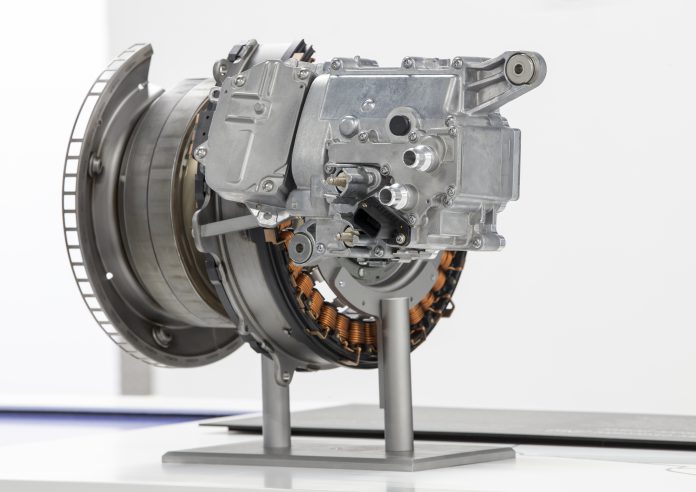
As said before, the 48V electrical system plays a key role in powering high consuming components such as the ISG, water pump and air conditioning compressor. The ISG takes over the responsibilities of the conventional drive belt as it recuperates energy straight into the car’s battery. This liberated a significant amount of space in the engine bay, making the setup much more sophisticated and less complex. The 12V system is still in play too, powering the car’s lights, cockpit, control units and infotainment system.
The intelligent ISG also closes the gap between combustion engines and hybrid powertrains. The system allows for fuel savings that were previously reserved for high-voltage hybrid technology. Its hybrid functions include a 15 kW boost, energy recovery, engine coasting, and 3S start: an almost imperceptible reinstatement of the engine.
The new four-cylinder gasoline engine (M 264)
Mercedes-Benz’ new petrol entry engine gets a significant update as well. Less is known about this particular engine, but it will be capable of an output up to 100 kW. This blasts the new entry-level engine into a territory that was previously dominated by the likes of various six-cylinder engines. The new four-cylinder has plenty much in common with Mercedes-AMG M 133 engine, as it will be similarly equipped with twin-scroll turbocharging technology. It will also feature a 48V system powering the belt-driven starter alternator (BSA) and the newly developed electric water pump. A further improved intake manifold shows shorter air paths and a more compact compressor housing ensures more spontaneous engine response.
Similar to the ISG in the inline-six gasoline, the BSA is also responsible for various fuel saving hybrid functions including a smoother start-up process, a further engine boost up to the 2,500 rpm range, energy recovery up to 12.5 kW, the ‘coasting’ procedure where the engine is shutoff when going downhill for example, and the vehicle’s intelligent start / stop system.
Large scale use of particulate filters on petrol engines
To round off the highlights of Mercedes-Benz’ impressive $3 billion ‘engine offensive’, the German brand will be the first in the world to implement the large scale use of particulate filters on gasoline engines. Starting with the facelifted S-Class next year, the use of particulate filters will be rolled out to other model lines as well.
This particulate filter works in a similar manner to the diesel filters that are now standard equipment on every diesel vehicle. The exhaust gas stream is supplied to a particulate filter system that is located in the underfloor of the car. The filter has a honeycomb structure with alternately sealed inlet and outlet channels. This directs the exhaust gas through a porous filter wall which then traps the so-called soot. While driving the filter will be continuously regenerated through burning of the micro particles that are left. The filter is optimized for back pressure and is said to be maintenance-free and self-regulating.
What’s next?
As mentioned before, first point on the agenda is the further expansion of Mercedes-Benz’ technology center in Sindelfingen which is due for completion in 2018. By then we are sure to have had a solid impression of the driving characteristics of the brand’s new combustion engines too.
While building entirely new internal combustion engines during these times of electrification and upcoming alternative powertrains such as hybrids and fuel cells may seem like a bold move, there seems to be a clear and well worked out idea behind this huge engine offensive. The bottom line is that Mercedes-Benz sees the internal combustion engine play an integral role in the coming years, and that it can function as a stepping stone towards a cleaner future.


